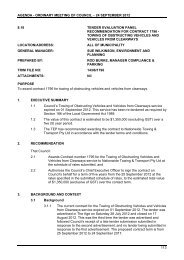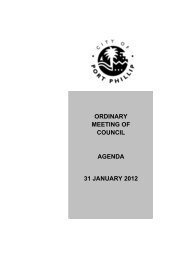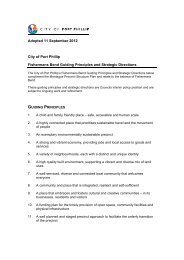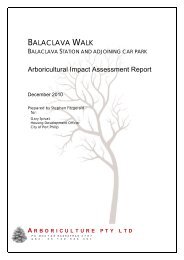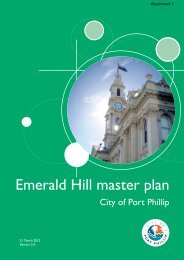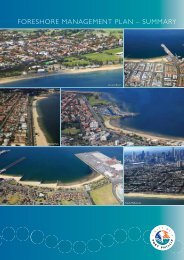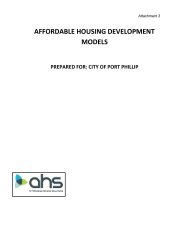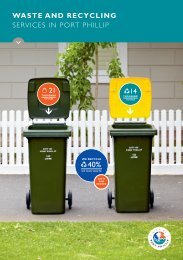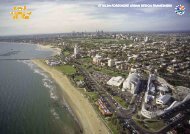You also want an ePaper? Increase the reach of your titles
YUMPU automatically turns print PDFs into web optimized ePapers that Google loves.
Hamatak halirin 459<br />
as explained below, the ultimate male origin, fire. As a male <strong>and</strong> female pair,<br />
We Sei <strong>and</strong> We Hali are symbolic representations <strong>of</strong> the transformation <strong>of</strong> life<br />
made possible by intermingling <strong>of</strong> the spirit <strong>of</strong> life (water) with fire. Fire is<br />
commonly made by the vigorous rubbing <strong>of</strong> a sharp slender (male) piece <strong>of</strong><br />
bamboo across a hole carved into the middle <strong>of</strong> a semi-sphere (female) piece<br />
<strong>of</strong> bamboo which has been filled with a ball <strong>of</strong> shaven bamboo fibre. As the<br />
fibres ignite in underbelly <strong>of</strong> the female bamboo, it is this visible eye <strong>of</strong> fire<br />
(hai matan) which transforms into life itself:<br />
We iha tiha<br />
Au iha tiha<br />
Hai la iha<br />
We tau ba au (feto no mane)<br />
(male <strong>and</strong> female intercourse)<br />
We feto<br />
Hai mane manas<br />
We have water<br />
We have bamboo<br />
But we have no fire<br />
Putting water into bamboo<br />
Water is female<br />
The hot fire is male.<br />
Space does not allow us to discuss the connection between We Biku, We Sei<br />
We Hali in the highl<strong>and</strong> <strong>of</strong> Fatumea with the kingdom <strong>of</strong> We Biku We Sei We<br />
Hali in the lowl<strong>and</strong> plains <strong>of</strong> Betun, Besikama <strong>and</strong> Kaminasa in West Timor<br />
<strong>and</strong> Suai Loro <strong>and</strong> Suai Kamanasa in East Timor (compare Francillon 1967;<br />
Therik 2004). But a few lines need to be written about this connection. According<br />
to the master <strong>of</strong> the sacred story <strong>of</strong> Fatumea, Suri Burak Dato Alin<br />
Fatumea (23 March 2011) <strong>and</strong> other elders <strong>of</strong> Fatumea <strong>and</strong> Lookeu, the great<br />
Timorese kingdom <strong>of</strong> We Hali originated from Fatumea:<br />
We Sei We Hali are originally in Fatumea. Later people from Fatumea took water<br />
from We Sei We Hali in Fatumea in a bamboo cylinder with a branch <strong>of</strong> the banyan<br />
(hali) tree in Fatumea, <strong>and</strong> brought them to the flat l<strong>and</strong>. While pouring the water<br />
into the ground <strong>and</strong> planting the banyan branch, they said: ‘We Sei...ee...ee.....We<br />
Hali...ee...eee.... These l<strong>and</strong>s will no longer be covered by the tide <strong>and</strong> the flood.’<br />
And they remained there <strong>and</strong> named the place We Sei We Hali. 14<br />
A traditional invocation <strong>of</strong> the centre <strong>of</strong> the kingdom <strong>of</strong> We Sei We Hali in<br />
West Timor, as recorded by Tom Therik (2004) refers to Fatumea as the origin<br />
<strong>of</strong> We Sei We Hali, that is, as the primeval origin place <strong>of</strong> the first human being<br />
<strong>and</strong> ‘the first place to dry’ (maran uluk):<br />
14 ‘We Sei We Hali iha Fatumea. Ikus mai ema hosi Fatumea lori we au bonun ida no hali hakon ida nodi<br />
ba fehan. Too fehan ba sia tolo we iha au bonun nee ba rai, no kuda hali delun nee nodi temi naake: “We<br />
Sei...ee...ee...We Hali...ee...eee.... Tasi la sae ona, meti la sae ona.” Ema sia nee hela iha iha fehan We Sei We<br />
Hali fehan nian’.



